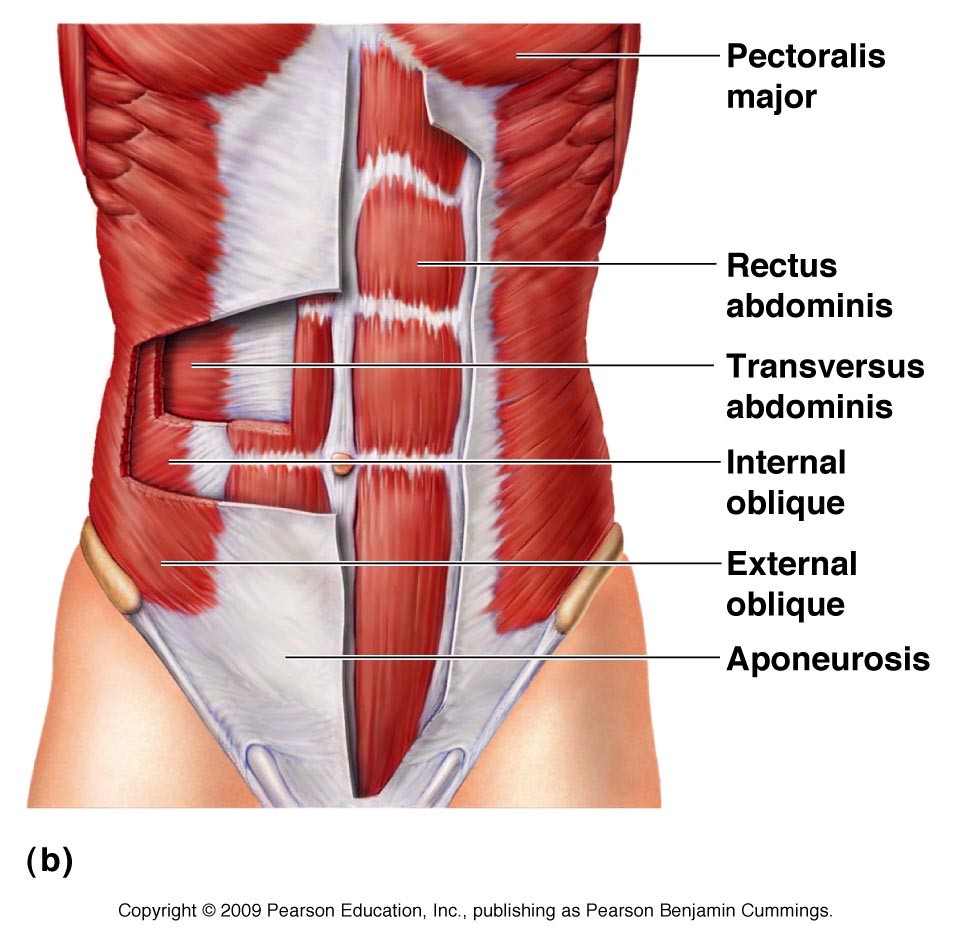A separation of the abdominal muscles is called a “Diastasis Recti Abdominis” or abbreviated to “DRAM”. In some cases, it can be congenital however it most commonly occurs during pregnancy and post-natal. Over 50% of women will experience a DRAM after giving birth.
What is a DRAM?
Most people may not be aware of this but you actually have right and left rectus abdominal (“abs”) muscles located at the front of your stomach. These abdominal muscles originate from the lower part of your chest bone and lower ribs and run parallel to one another connecting into your pubic bone at the front of your pelvis. These muscles are responsible for flexing your trunk so every time you do a sit up or bend forwards they will be contracting. They are also the muscles that give people that “six pack” look. The two abdominal muscles are connected together by connective tissue. This tissue is called “Linea Alba” and sometimes this tissue can stretch and/or separate and that is called a DRAM.
Why is it so common to have a DRAM during and/or post pregnancy?
During your pregnancy, your abdominal muscles and the linea alba can become stretched and/or separated for two reasons.
Firstly, as the baby grows and your stomach becomes bigger, your rectus abdominal muscles and the connective tissue can become stretched and possibly separate.
Secondly, during pregnancy and post-natal while you are still breast feeding, your body releases a hormone called “Relaxin”. This hormone is released from your ovaries and its job is to stretch soft tissue (muscles & ligaments etc), in order to prepare you for childbirth.
How do I know if I have a DRAM?
Your physiotherapist can perform a quick and easy test to assess if you have a DRAM. This test involves palpation of your rectus abdominal muscles and the linea alba.
Additionally, your physiotherapist can assess your DRAM more thoroughly using the real time ultra sound machine. If you do have a DRAM and it is less than 2cm then that is really nothing to worry about however it is still a good idea to monitor it to ensure it does not increase/further separate.
What to do if you have a DRAM?
- Avoid doing heavy abdominal exercises e.g. sit ups to prevent the separation from becoming bigger
- Roll every time you get in and out of bed
- Clinical pilates can help to strengthen your deeper core muscles to ensure you have maximum support
- Wear compression garments during the day e.g. SRC recovery shorts
- Be conscious of your posture while standing, sitting, breast feeding.
- Avoid unnecessary heavy lifting or any heavy weight training
- Allow your body time to heal – it can take up to 12 months for the separation to close up and sometimes it may not close completely.
Why is clinical pilates helpful if you have a DRAM?
You have four muscle layers in your trunk. The rectus abdominal muscles make up the first layer so they sit very superficially. The fourth and deepest core muscle layer is your transversus abdominis. These deeper muscles are the ones that we focus on strengthening up in clinical Pilates. Transversus abdominis acts like a corset and provides support to your spine while your pelvic floor muscles are like a “sling” that hold and support the organs located in your abdominal and pelvic regions. Strengthening your transversus abdominis and your pelvic floor muscles can help close your separation and prevent it from getting worse.
If you have any questions or queries regarding your current or potential DRAM please discuss this with your physiotherapist. They will be able to provide more specific advice and prescribe individualised exercises that can assist you.
- Julia Esposito

